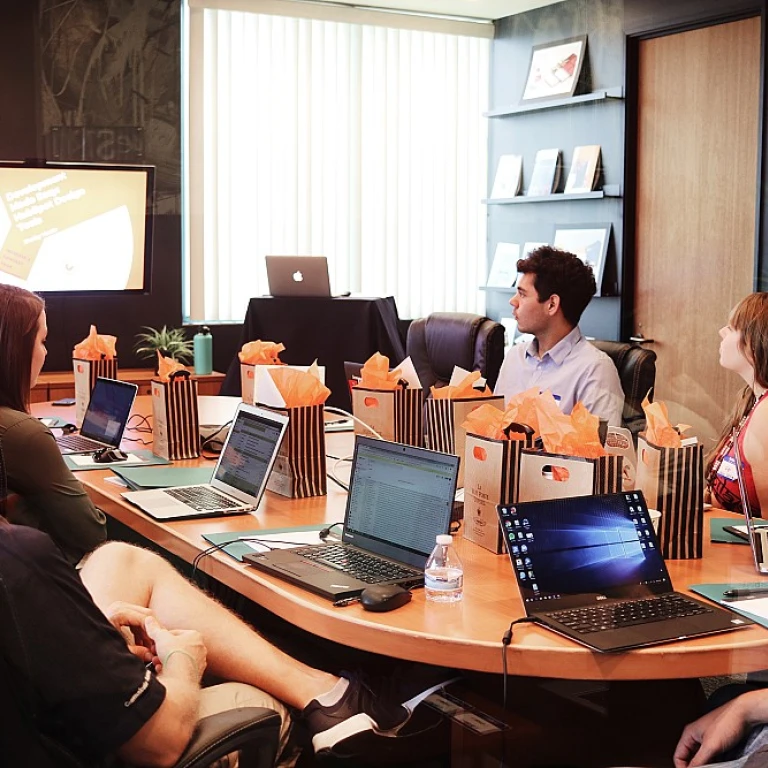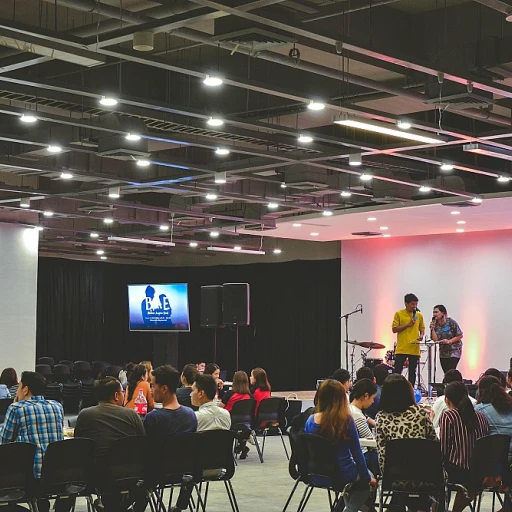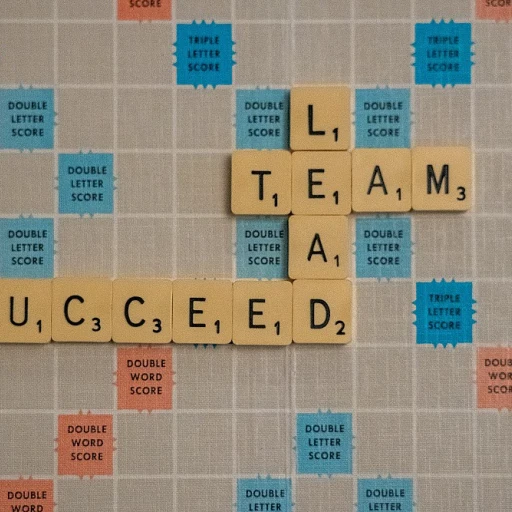
Understanding the Impact of Rapid Change on HR Communication
Shifting Tides in HR Communication
In the ever-evolving landscape of human resources, communication faces the formidable challenge of rapid change. Organizations are compelled to adapt swiftly to emerging business models, technological innovations, and shifting workforce expectations. As companies embrace digital transformation, their HR communication strategies must be equally agile to support change management effectively.
Understanding the transformative impact that rapid change has on HR communication is the first step. The business environment today demands a proactive approach in managing this evolution. Senior executives and leaders are increasingly focused on ensuring that HR teams are not just participants in change but are also proactive change agents.
Change technology serves as a catalyst for innovation growth within organizations. Multiple forms of communication channels, be it digital platforms or in-person interactions, are utilized to convey messages effectively. Organizations that select a multifaceted communication approach often witness positive change in employee engagement and productivity.
Furthermore, changes are not isolated incidents. They are continuous and often unpredictable, demanding a resilient communication framework. By preparing HR teams for future work dynamics, businesses can navigate these waters smoothly. Initiatives such as change rapid training sessions and workshops for HR professionals help cultivate the skills necessary for driving positive change.
Don’t forget, it takes more than communication tools; it requires leaders and managers to be committed to the organization’s vision while remaining adaptable to change. As more businesses embrace digital platforms like LinkedIn for professional networking and idea sharing, integrating these tools into HR communication ensures support is readily available for new policies and business strategies.
Key Strategies for Effective Communication in a Fast-Paced Environment
Adapting Communication Strategies: Key Pillars for Success
In today's fast-paced business environment, Human Resources (HR) teams must be adept at navigating the challenges of rapid changes. The secret to remaining successful lies in employing effective communication strategies that are responsive to both internal and external shifts.- Embrace Innovation and Flexibility: Organizations need to be open to adopting new communication technologies and methods. This willingness to explore innovative digital tools and services not only enhances communication but also drives positive change across the board. Leaders and managers must champion this transition to ensure their teams are equipped to handle change.
- Segment and Personalize Communication: In the era of information overload, it's crucial to tailor messages to the needs of different audiences. By understanding the unique requirements of senior executives versus frontline employees, HR can ensure that the right message reaches the right people at the right time. Personalized communication strategies foster engagement and ensure clarity.
- Strengthen the Feedback Loop: Listening is just as important as speaking in the communication process. Establishing channels for feedback encourages a culture of open dialogue and trust. Organizations that prioritize this collaborative communication model are better positioned to support positive change and innovation growth.
Leveraging Technology for Real-Time Communication
Embracing Digital Tools to Enhance Communication Dynamics
The era of digital transformation calls organizations to embrace change with open arms. Leaders and managers are consistently seeking innovation to drive effective communication within their teams. With rapid technological change, several applications and platforms have emerged as essential tools for real-time communication. These platforms not only simplify communication but also foster an environment where ideas can be exchanged seamlessly.In order to stay competitive, organizations invest in digital channels that support instant messaging, video conferencing, and cloud collaboration. Social media platforms such as LinkedIn have proven effective for networking and sharing business insights. These tools allow change agents to transform existing business models and develop robust communication frameworks that can adapt to change rapidly. By selecting technologies that meet the needs of their people, organizations can create a positive change management culture.
Choosing the Right Tools for Your Organization
Selecting tools that align with the organization's needs is crucial. It is essential for leaders to identify the digital tools that will serve their business models best, considering the organization's privacy policy and security concerns. A well-resourced tool helps maintain a unified communication system that engages senior executives and other team members efficiently.To achieve optimal innovation growth, it is imperative for leaders to remain agile, continually adapting their communication strategies for future work scenarios. It is about fostering an environment where embracing change becomes second nature. This commitment to change technology not only enhances communication but also supports training development for HR teams, ensuring they are prepared to tackle the challenges of rapid change.
For more insights and strategies on effectively leveraging technology for communication, explore navigating the chaos in Human Resources Communication.
Building a Resilient Communication Framework
Constructing a Robust Communication Network
In an era of rapid change, organizations must innovate continuously to ensure that their communication frameworks remain resilient. A robust communication framework serves as the backbone for navigating change and driving positive change across the organization. Leaders and managers should focus on creating a structure that can withstand the pressures of a fast-evolving business environment.
To effectively build such a framework, consider the following components:
- Diversify Communication Channels: Utilize multiple communication channels to reach a broader audience. This includes email, instant messaging, digital platforms, and face-to-face meetings. Diversifying your communication methods helps cater to the preferences of a diverse workforce and ensures messages are received and understood by all.
- Adapt to Change Rapidly: Organizations must be agile and ready to embrace change quickly. This involves having a flexible communication strategy that can be adjusted as new developments arise. It's crucial to stay ahead of changes in privacy policy, business models, and technological innovations.
- Evaluate and Adjust: Continuously assess the effectiveness of your communication strategies. Use data and feedback to make informed decisions and select the most effective methods for your organization's unique needs.
- Promote Transparency and Trust: Transparent communication fosters trust within the organization. Ensure that leaders and change agents communicate openly about future work and organizational changes, creating a culture of trust and accountability.
To prepare for future challenges, it's important to integrate training and development initiatives for HR teams, enabling them to adapt to rapid changes and enhance their communication skills. By focusing on building a resilient framework, businesses will be better equipped to navigate the complexities of rapid change and maintain a positive workplace culture.
Training and Development: Preparing HR Teams for Change
Empowering HR Teams Through Continuous Learning
In the fast-paced world of human resources, organizations face an unavoidable reality: change is constant and often rapid. To keep pace with change innovation and ensure the smooth functioning of HR communication, organizations must invest in comprehensive training and development programs. These programs empower HR teams to navigate the dynamic landscape of business models and digital transformation. Continuous Learning Training and development initiatives are essential in fostering a culture of continuous learning. Organizations should select training modules that not only address the current needs of the team but also consider the broader trajectory of future work. This means staying informed about emerging technologies and being agile in adapting to them. For example, workshops focusing on digital communication tools can significantly enhance internal communication in environments where real-time updates are crucial. Adapting to Rapid Change Success in managing rapid change involves more than quick adaptation; it requires leaders and managers to become effective change agents. This calls for a proactive approach to training that encourages strategic thinking and innovation growth. Senior executives must champion these initiatives, ensuring that they align with the organization’s goals and privacy policy requirements. Integration with Business Goals There is immense value in linking training objectives with broader organizational goals. By aligning training with business model transformations, organizations can ensure that their HR teams are not just reactive but also strategically poised to lead positive change. This alignment helps in building a resilient framework that supports the organization's vision for the future. Don’t forget to leverage platforms like LinkedIn for peer support and benchmarking against industry best practices. This can provide invaluable insights into how existing business models can be reshaped to accommodate future demands. Innovation in Learning Innovation is key to ensuring that training programs remain relevant and engaging. By using a blend of traditional and digital learning methods, organizations can cater to the diverse learning preferences of their HR teams. This holistic approach not only enhances skillsets but also prepares teams for the unpredictable nature of change technology. Ultimately, investing in the development of HR professionals is an investment in the organization's capacity to thrive amidst rapid changes. Action leaders within the organization must prioritize this to ensure that the workforce remains dynamic and prepared to adapt to any challenge the future holds.Case Studies: Success Stories in Managing Change
Lessons from Real-World Experiences
In today's business world, effectively managing rapid changes requires not only strategic planning but also learning from organizations that have successfully navigated these challenges. Looking at various examples can provide valuable insights into fostering a culture of innovation, resilience, and adaptability. Let's delve into some case studies that shed light on how different organizations have embraced change to create positive outcomes.- Embracing Digital Transformation: One company saw the need for a digital overhaul as the future work environment became increasingly tech-driven. Under the guidance of visionary leaders, they implemented cloud services and digital tools to streamline communications, thereby improving collaboration among teams across multiple locations. This shift not only boosted productivity but also equipped the workforce to respond swiftly to market changes. As a result, senior executives reported increased engagement and morale among employees.
- Adapting to New Business Models: Faced with rapidly evolving market demands, another organization set out to re-engineer its existing business model. By appointing action leaders as change agents, the company evaluated their current practices and strategically pivoted to align with future work trends. They incorporated real-time communication strategies to keep all stakeholders informed and engaged, ensuring seamless transitions and minimizing disruptions.
- Implementing Change Management Initiatives: In another instance, a business recognized the importance of training their HR teams to be proficient change facilitators. They launched initiatives designed to equip leaders and managers with tools to manage change innovation effectively. This approach not only bolstered HR's role in supporting change but also fostered a more resilient and agile workforce.












